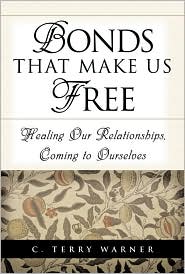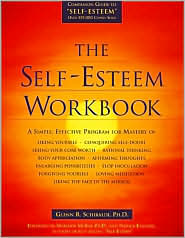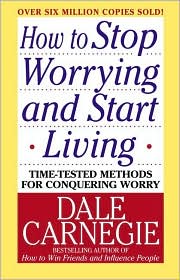Using the story/parable format so popular these days, Leadership and Self-Deception takes a novel psychological approach to leadership. It's not what you do that matters, say the authors (presumably plural--the book is credited to the esteemed Arbinger Institute), but why you do it. Latching onto the latest leadership trend won't make people follow you if your motives are selfish--people can smell a rat, even one that says it's trying to empower them. The tricky thing is, we don't know that our motivation is flawed. We deceive ourselves in subtle ways into thinking that we're doing the right thing for the right reason. We really do know what the right thing to do is, but this constant self-justification becomes such an ingrained habit that it's hard to break free of it--it's as though we're trapped in a box, the authors say.
Learning how the process of self-deception works--and how to avoid it and stay in touch with our innate sense of what's right--is at the heart of the book. We follow Tom, an old-school, by-the-book kind of guy who is a newly hired executive at Zagrum Corporation, as two senior executives show him the many ways he's "in the box," how that limits him as a leader in ways he's not aware of, and of course how to get out. This is as much a book about personal transformation as it is about leadership per se. The authors use examples from the characters' private as well as professional lives to show how self-deception skews our view of ourselves and the world and ruins our interactions with people, despite what we sincerely believe are our best intentions.
Life can be sweet. Our relationships with friends, spouses, colleagues, and family members can be wonderfully rewarding. They can also bring heartache, frustration, anxiety, and anger. We all know the difference between times when we feel open, generous, and at ease with people versus times when we are guarded, defensive, and on edge.
Why do we get trapped in negative emotions when it's clear that life is so much fuller and richer when we are free of them?
Bonds That Make Us Free is a ground-breaking book that suggests the remedy for our troubling emotions by addressing their root causes. You'll learn how, in ways we scarcely suspect, we are responsible for feelings like anger, envy, and insecurity that we have blamed on others. (How many times have you said, "You're making me mad!")
Even though we fear to admit this, it is good news. If we produce these emotions, it falls within our power to stop them. But we have to understand our part in them far better than we do, and that is what this remarkable book teaches.
Because the key is seeing truthfully, the book itself is therapeutic. As you read and identify with the many true stories of people who have seen a transformation in their lives, you will find yourself reflecting with fresh honesty upon your relationships. This will bond you to others in love and respect and lift you out of the negative thoughts and feelings that have held you captive. You will feel your heart changing even as you read.
"It would not be accurate to describe this book as supplying the truths upon which we must build our lives," writes author C. Terry Warner. "Instead it shows how we can put ourselves in that receptive, honest, and discerning condition that will enable us, any of us, to find these truths on our own."
Finding these truths is the key to healing our relationships and coming to ourselves, and Bonds That Make Us Free starts us on that great journey.
A host of dysfunctional and self-destructive patterns arise at minor and acute levels if an individual dislikes him- or herself. Despite the importance of self-esteem, surprisingly little attention has been focused on building it directly, until now. Designed in an easy-to-use format, The Self-Esteem Workbook presents a course in self-esteem based on new research and sound principles. Checklists, fill-ins, and exercises show readers how thoughts, emotions, physical health, and behavior impact their self-esteem. Periodic checkups help them gauge their progress, and final sections offer strategies for preventing relapse.
The 7 Habits of Highly Effective People: Powerful Lessons in Personal Change was a groundbreaker when it was first published in 1990, and it continues to be a business bestseller with more than 10 million copies sold. Stephen Covey, an internationally respected leadership authority, realizes that true success encompasses a balance of personal and professional effectiveness, so this book is a manual for performing better in both arenas. His anecdotes are as frequently from family situations as from business challenges. Before you can adopt the seven habits, you'll need to accomplish what Covey calls a "paradigm shift"--a change in perception and interpretation of how the world works. Covey takes you through this change, which affects how you perceive and act regarding productivity, time management, positive thinking, developing your "proactive muscles" (acting with initiative rather than reacting), and much more. This isn't a quick-tips-start-tomorrow kind of book. The concepts are sometimes intricate, and you'll want to study this book, not skim it. When you finish, you'll probably have Post-it notes or hand-written annotations in every chapter, and you'll feel like you've taken a powerful seminar by Covey.
This book excels not only in explaining the cause and nature of anxiety disorders and phobias but also in describing treatments. Director of the Anxiety Treatment Center in Santa Rosa (California), Bourne emphasizes the cognitive-behavioral model of treatment but includes information on biopsychiatry, intense psychotherapy, and spirituality as additional treatment modalities. This is truly a "workbook," with exercises designed to facilitate recovery, either through private use or in conjunction with professional therapy. If your library already owns the 1990 edition and money is an object, you can probably pass on this revision, which updates the definitions of anxiety and phobia so that they conform with the new DSM-IV diagnostic criteria and includes new information on the biological causes of anxiety and related treatment developments. However, if your collection lacks a good lay reader's book on anxiety and phobia, this is an excellent choice.
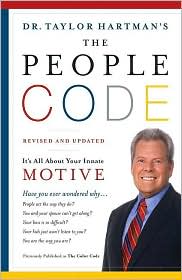
In his life-changing book, Dr. Taylor Hartman introduces you to the People Code and why people do what they do. The concept of Motive is a fresh method for analyzing your own innate personality as well as that of those around you. You then have the ability to utilize that knowledge to improve workplace and personal relationships. As an author, psychologist, and leadership coach, Dr. Hartman offers a remarkably astute system for segmenting everyone into specific Motive-types denoted by a color: Red (power wielders), Blue (do-gooders), White (peacekeepers), and Yellow (fun lovers). He then explains how to ensure that all possible alliances between them function at optimum effectiveness. If you struggle with self-acceptance and have questions about why you and others act the way you do, Dr. Hartman and The People Code can help you maximize your life success by improving your day-to-day relationships.
We needed to stop asking about the meaning of life, and instead to think of ourselves as those who were being questioned by life-daily and hourly. Our answer must consist not in talk and meditation, but in right action and in right conduct. Life ultimately means taking the responsibility to find the right answer to its problems and to fulfill the tasks which it constantly sets for each individual.When Man's Search for Meaning was first published in 1959, it was hailed by Carl Rogers as "one of the outstanding contributions to psychological thought in the last fifty years." Now, more than forty years and 4 million copies later, this tribute to hope in the face of unimaginable loss has emerged as a true classic. Man's Search for Meaning—at once a memoir, a self-help book, and a psychology manual-is the story of psychiatrist Viktor Frankl's struggle for survival during his three years in Auschwitz and other Nazi concentration camps. Yet rather than "a tale concerned with the great horrors," Frankl focuses in on the "hard fight for existence" waged by "the great army of unknown and unrecorded."
Viktor Frankl's training as a psychiatrist allowed him a remarkable perspective on the psychology of survival. In these inspired pages, he asserts that the "the will to meaning" is the basic motivation for human life. This simple and yet profound statement became the basis of his psychological theory, logotherapy, and forever changed the way we understand our humanity in the face of suffering. As Nietzsche put it, "He who has a why to live for can bear almost any how." Frankl's seminal work offers us all an avenue to greater meaning and purpose in our own lives-a way to transcend suffering and find significance in the act of living.
There is little correlation between the circumstances of people's lives and how happy they are.
When you ask people about their most cherished values in life, "happiness" is always at the top of the list. However, unhappiness does not seem to be the exceptional order to be happy, we first have to battle ourselves.
Not only do we have a right to be happy, we have an obligation to be happy. Our happiness has an effect on the lives of everyone around us--it provides them with a positive environment in which to thrive and to be happy themselves.
A SIMPLE PLAN... A LIFE-CHANGING RESULT...
A HAPPIER LIFE
·What exactly is a complaint? (Chapter 1)
·Why is complaining destructive? (Chapters 2–3)
·How can I get others around me to stop complaining? (Chapter 3)
·How can we affect social change if we don't complain? (Chapter 5)
·Why is it so hard to stop complaining? (Chapters 4–6)
·What happens once I no longer complain? (Chapter 8)
You may have pondered these questions yourself. Since the Complaint Free program began, Will Bowen has received hundreds of calls, letters and emails asking these and other important questions. In A Complaint Free World: How to Stop Complaining and Start Enjoying the Life You Always Wanted, he provides practical answers and includes inspiring and touching stories from people just like you who have transformed their lives by becoming Complaint Free.
Over 6 million people in more than 80 countries have taken the Complaint Free challenge and their lives are a testament to the positive effects of this simple idea. Find out how forming the simple habit of not complaining can transform your health, relationships, career and life.
·Why is complaining destructive? (Chapters 2–3)
·How can I get others around me to stop complaining? (Chapter 3)
·How can we affect social change if we don't complain? (Chapter 5)
·Why is it so hard to stop complaining? (Chapters 4–6)
·What happens once I no longer complain? (Chapter 8)
You may have pondered these questions yourself. Since the Complaint Free program began, Will Bowen has received hundreds of calls, letters and emails asking these and other important questions. In A Complaint Free World: How to Stop Complaining and Start Enjoying the Life You Always Wanted, he provides practical answers and includes inspiring and touching stories from people just like you who have transformed their lives by becoming Complaint Free.
Over 6 million people in more than 80 countries have taken the Complaint Free challenge and their lives are a testament to the positive effects of this simple idea. Find out how forming the simple habit of not complaining can transform your health, relationships, career and life.
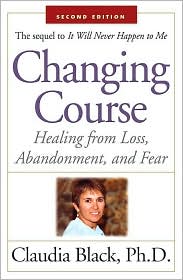
In Changing Course, the best-selling sequel to It Will Never Happen to Me, Claudia Black extends a helping hand to individuals working their way through the painful experience of being raised with addiction.
"How do you go from living according to the rules--Don't Talk, Don't Trust, Don't Feel--to a life where you are free to talk and trust and feel?" Black asks. "You do this through a process that teaches you to go to the source of those rules, to question them, and to create new rules of your own," she explains. Using charts, exercises, checklists, and real-life stories of adult children of alcoholics, Black carefully and expertly guides readers in healing from the fear, shame, and chaos of addiction.

By understanding five key principles — Thought, Moods, Separate Realities, Feelings, and the Present Moment — we can discover a new mode of living that doesn’t repress natural emotions nor allow us to become overwhelmed by feelings and thoughts. We are raised to believe our happiness depends on outside circumstances. Yet Carlson shows that happiness has nothing to do with forces beyond our control. In fact, our natural state is contentment. He teaches us how to recognize that state and do everything we can to foster it. From the author of Don’t Sweat the Small Stuff, You Can Be Happy No Matter What is a navigational tool that guides listeners through life’s trials and restores the joy of living along the way.
Pia Mellody creates a framework for identifying codependent thinking, emotions and behaviour and provides an effective approach to recovery. Mellody sets forth five primary adult symptoms of this crippling condition, then traces their origin to emotional, spiritual, intellectual, physical and sexual abuses that occur in childhood. Central to Mellody′s approach is the concept that the codependent adult′s injured inner child needs healing. Recovery from codependence, therefore, involves clearing up the toxic emotions left over from these painful childhood experiences.
Psychologist John Gottman has spent 20 years studying what makes a marriage last. Now you can use his tested methods to evaluate, strengthen, and maintain your own long-term relationship. This breakthrough book guides you through a series of self-tests designed to help you determine what kind of marriage you have, where your strengths and weaknesses are, and what specific actions you can take to help your marriage.
You'll also learn:
More sex doesn't necessarily improve a marriage
* Frequent arguing will not lead to divorce
* Financial problems do not always spell trouble in a relationship
* Wives who make sour facial expressions when their husbands talk are likely to be separated within four years
* There is a reason husbands withdraw from arguments — and there's a way around it
Dr. Gottman tells you how to recognize attitudes that doom a marriage — contempt, criticism, defensiveness, and stonewalling — and provides practical exercises, quizzes, tips, and techniques that will help you understand and make the most of your relationship. You can avoid patterns that lead to divorce, and — Why Marriages Succeed or Fail will show you how.Originally published in 1936, this is the archetype of the practical human relations handbook. Carnegie opens with fundamental techniques for dealing with people, such as refraining from criticism and expressing sincere appreciation. Making people like you by smiling, remembering names, and being a good listener are encouraged. Final sections describe approaches for persuading people to your way of thinking and how to change people without causing offense or resentment. These positive principles are stated succinctly and illustrated with pertinent, if occasionally outmoded, anecdotes. While critics have charged that Carnegie emphasized good manners and friendliness over proficiency, the author clearly states that his target audience is competent individuals who are less than successful because they lack people skills, a group that would be well served by his sensible guidance.
With Dale Carnegie's timeless advice in hand, more than six million people have learned how to eliminate debilitating fear and worry from their lives and to embrace a worry-free future. In this classic work, How to Stop Worrying and Start Living, Carnegie offers a set of practical formulas that you can put to work today. It is a book packed with lessons that will last a lifetime and make that lifetime happier!
DISCOVER HOW TO:
Todd Crandell’s drug use and drinking destroyed his life. In his 20s, he had gone from being a hockey player on his way to a professional career to a homeless, starving, and drug-addicted ghost of himself. After several brutal and harrowing encounters with rock-bottom, he decided to quit cold-turkey; then he took up triathlons, and found that this athletic challenge helped him overcome his addictions. A mesmerizing, inspirational story of self-destruction and resurrection.
Unhappiness in marriage often has a simple root cause: we speak different love languages, believes Dr. Gary Chapman. While working as a marriage counselor for more than 30 years, he identified five love languages: Words of Affirmation, Quality Time, Receiving Gifts, Acts of Service, and Physical Touch. In a friendly, often humorous style, he unpacks each one. Some husbands or wives may crave focused attention; another needs regular praise. Gifts are highly important to one spouse, while another sees fixing a leaky faucet, ironing a shirt, or cooking a meal as filling their "love tank." Some partners might find physical touch makes them feel valued: holding hands, giving back rubs, and sexual contact. Chapman illustrates each love language with real-life examples from his counseling practice.
How many times have you thought about starting a
diet or quitting smoking without doing anything
about it? Or lapsed back into bad habits after hitting
a rough spot on the road to recovery?
To uncover the secret to successful personal change, three acclaimed psychologists studied more than 1000 people who were able to positively and permanently alter their lives without psychotherapy. They discovered that change does not depend on luck or willpower. It is a process that can be successfully managed by anyone who understands how it works. Once you determine which stage of change you're in, you can:
change can occur
a permanent part of your life
This groundbreaking book offers simple self-assessments, informative case histories, and concrete examples to help clarify each stage and process. Whether your goal is to start saving money, to stop drinking, or to end other self-defeating or addictive behaviors, this revolutionary program will help you implement positive personal change . . . for life.
THE NATIONAL CANCER INSTITUTE HAS
FOUND THIS PROGRAM MORE THAN TWICE AS
EFFECTIVE AS STANDARD PROGRAMS IN
HELPING SMOKERS QUIT FOR 18 MONTHS.
FOUND THIS PROGRAM MORE THAN TWICE AS
EFFECTIVE AS STANDARD PROGRAMS IN
HELPING SMOKERS QUIT FOR 18 MONTHS.
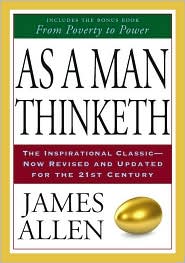
James Allen's classic AS A MAN THINKETH. The Bestselling Classic That Inspired "The Secret". AS A MAN THINKETH, Allen's most famous book, today is considered a classic self-help book. Its underlying premise is that noble thoughts make a noble person, while lowly thoughts make a miserable person. In "As a Man Thinketh," James Allen reveals how our thoughts determine reality. Whether or not we are conscious of it, our underlying beliefs shape our character, our health and appearance, our circumstances, and our destinies. Allen shows how we can master our thoughts to create the life we want, lest we drift through life unconscious of the inner forces that keep us mired in failure and frustration. "The Vision that you glorify in your mind, the Ideal that you enthrone in your heart-this you will build your life by, this you will become." This principle, which others have called THE SECRET or the LAW OF ATTRACTION, was clearly and convincingly stated for the first time in "As a Man Thinketh." As a being of Power, Intelligence, and Love, and the lord of his own thoughts, man holds the key to every situation, and contains within himself that transforming and regenerative agency by which he may make himself what he wills.
Say It, See It, Be It! How Affirmations and Visions Will Change Your Life will empower you to find your life’s purpose, sacredness, and inner genius. Author Arlene Rosenberg describes her journey and quest for a life of confidence, self-esteem, success and security, and shows how you can find your own way to extraordinary personal and professional growth.
Within the pages of this transformational book, Dr. Wayne W. Dyer reveals how to change the self-defeating thinking patterns that have prevented you from living at the highest levels of success, happiness, and health. Even though you may know what to think, actually changing those thinking habits that have been with you since childhood might be somewhat challenging.
If I changed, it would create family dramas . . . I’m too old or too young . . . I’m far too busy and tired . . . I can’t afford the things I truly want . . . It would be very difficult for me to do things differently . . . and I’ve always been this way . . . may all seem to be true, but they’re in fact just excuses. So the business of modifying habituated thinking patterns really comes down to tossing out the same tired old excuses and examining your beliefs in a new and truthful light. In this groundbreaking work, Wayne presents a compendium of conscious and subconscious crutches employed by virtually everyone, along with ways to cast them aside once and for all. You’ll learn to apply specific questions to any excuse, and then proceed through the steps of a new paradigm. The old, habituated ways of thinking will melt away as you experience the absurdity of hanging on to them.
You’ll ultimately realize that there are no excuses worth defending, ever, even if they’ve always been part of your life—and the joy of releasing them will resonate throughout your very being. When you eliminate the need to explain your shortcomings or failures, you’ll awaken to the life of your dreams.
Five hundred years before the birth of Jesus, a God-realized being named Lao-tzu in ancient China dictated 81 verses, which are regarded by many as the ultimate commentary on the nature of our existence. The classic text of these 81 verses, called the Tao Te Ching or the Great Way, offers advice and guidance that is balanced, moral, spiritual, and always concerned with working for the good.
In this book, Dr. Wayne W. Dyer has reviewed hundreds of translations of the Tao Te Ching and has written 81 distinct essays on how to apply the ancient wisdom of Lao-tzu to today’s modern world. This work contains the entire 81 verses of the Tao, compiled from Wayne’s researching of 10 of the most well-respected translations of text that have survived for more than 25 centuries. Each chapter is designed for actually living the Tao or the Great Way today. Some of the chapter titles are “Living with Flexibility,” “Living Without Enemies,” and “Living by Letting Go.” Each of the 81 brief chapters focuses on living the Tao and concludes with a section called “Doing the Tao Now.”
Wayne spent one entire year reading, researching, and meditating on Lao-tzu’s messages, practicing them each day and ultimately writing down these essays as he felt Lao-tzu wanted you to know them.
This is a work to be read slowly, one essay a day. As Wayne says, “This is a book that will forever change the way you look at your life, and the result will be that you’ll live in a new world aligned with nature. Writing this book changed me forever, too. I now live in accord with the natural world and feel the greatest sense of peace I’ve ever experienced. I’m so proud to present this interpretation of the Tao Te Ching, and offer the same opportunity for change that it has brought me.”
THE KEY TO A BETTER BODY—in shape, energized, and youthful—is a healthy brain. Based on the latest medical research, as well as on Dr. Amen’s two decades of clinical practice at the renowned Amen Clinics, where Dr. Amen and his associates pioneered the use of the most advanced brain imaging technology, Change Your Brain, Change Your Body shows you how to take the very best care of your brain.
With fifteen practical, easy-to-implement solutions involving nutritious foods, natural supplements and vitamins, positive-thinking habits, and, when necessary, highly targeted medications, Dr. Amen shows you how to:
* Reach and maintain your ideal weight
* Soothe and smooth your skin at any age
* Reduce the stress that can impair your immune system
* Sharpen your memory
* Increase willpower and eliminate the cravings that keep you from achieving your exercise and diet goals
* Enhance sexual desire and performance
* Lower your blood pressure without medication
* Avoid depression and elevate the enjoyment you take in life’s pleasures.
Whether you’re just coming to realize that it’s time to get your body into shape, or are already fit and want to take it to the next level, Change Your Brain, Change Your Body is all you need to start putting the power of the brain-body connection to work for you today.
BRAIN PRESCRIPTIONS THAT REALLY WORK In this breakthrough bestseller, you'll see scientific evidence that your anxiety, depression, anger, obsessiveness, or impulsiveness could be related to how specific structures in your brain work. You're not stuck with the brain you're born with. Here are just a few of neuropsychiatrist Dr. Daniel Amen's surprising--and effective--"brain prescriptions" that can help heal your brain and change your life:
To Quell Anxiety and Panic:
In this national bestseller, acclaimed, award-winning psychologist Dr. David Walsh explains exactly what happens to the human brain on the path from childhood into adolescence and adulthood. Revealing the latest scientific findings in easy-to-understand terms, Dr. Walsh shows why moodiness, quickness to anger and to take risks, miscommunication, fatigue, territoriality, and other familiar teenage behavior problems are so common — all are linked to physical changes and growth in the adolescent brain.
Why Do They Act That Way? is the first book to explain the changes in teens' brains and show parents how to use this information to understand, communicate with, and stay connected to their kids. Through real-life stories, Dr. Walsh makes sense of teenagers' many mystifying, annoying, and even outright dangerous behavioral difficulties and provides realistic solutions for dealing with everyday as well as severe challenges. Dr. Walsh's techniques include, among others: sample dialogues that help teens and parents talk civilly and constructively with each other, behavioral contracts, and Parental Survival Kits that provide practical advice for dealing with issues like curfews, disrespectful language and actions, and bullying. With this arsenal of strategies, parents can help their kids learn to control impulses, manage erratic behavior, cope with their changing bodies, and, in effect, develop a second brain.
“You never listen to anything I say!”
Yesterday, your child was a sweet, well-adjusted eight-year-old. Today, a moody, disrespectful twelve-year-old. What happened? And more important, how do you handle it? How you respond to these whirlwind changes will not only affect your child's behavior now but will determine how he or she turns out later. Julie A. Ross, executive director of Parenting Horizons, shows you exactly what's going on with your child and provides all the tools you need to correctly handle even the prickliest tween porcupine.
- Find out how other parents survived nightmarish tween behavior—and still raised great kids
- Break the “nagging cycle,” give your kids responsibilities, and get results
- Talk about sex, drugs, and alcohol so your kid will listen
- Discover the secret that will help your child to disregard peer pressure and make smart choices—for life
In Happy for No Reason: 7 Steps to Being Happy from the Inside Out, transformational expert Marci Shimoff offers a breakthrough approach to being happy, one that doesn't depend on achievements, goals, money, relationships, or anything else "out there." Most books on happiness tell you to find the things that make you happy and do more of them. Although there's nothing wrong with that, it won't bring you the kind of deep and lasting happiness most people long for — the kind you'll never lose, no matter what happens in your life. Based on cutting-edge research and knowledge from the world's leading experts in the fields of positive psychology and neurophysiology, plus interviews with 100 truly happy people, this life-changing book provides a powerful, proven 7-step program that will enable you to be happier right now — no matter where you start.
Edgework provides a concise overview of the research on the mind/body, summarizing the essence of healing at the level of consciousness and guiding readers through the process with detailed exercises that make the concepts a personal reality.
The shadow, or unconscious mind, contains all the unfelt fear, anger, sadness and other emotional pain we have experienced since birth. Throughout life, the shadow influences conscious choices in order to set up opportunities for feeling, owning and healing these emotional wounds long before they precipitate into the body. This approach provides a framework for inner healing that encourages use of the suggested techniques day to day, either to help in the treatment of an illness or to prevent disease in the first place.
Edgework is for everyone who has dis-ease of any kind. It is especially for those who have serious or "incurable" illness, which can be a most powerful motivation to heal at the deeper, formative level of consciousness. Working on the edge is risky business, but the greatest adventure is self-discovery and the integration of mind, body and Spirit.
For nearly a decade, The Addictive Personality has helped people understand the process of addiction. Now, through this second edition, author Craig Nakken brings new depth and dimension to our understanding of how an individual becomes an addict. Going beyond the definition that limits dependency to the realm of alcohol and other drugs, Nakken uncovers the common denominator of all addiction and describes how the process is progressive.Through research and practical experience, Nakken sheds new light on:
- Genetic factors tied to addiction
- Cultural influences on addictive behaviors
- The progressive nature of the disease
- Steps to a successful recovery
The author examines how addictions start, how society pushes people toward addiction, and what happens inside those who become addicted. This new edition will help anyone seeking a better understanding of the addictive process and its impact on our lives.
This classic book, written 17 years ago but still selling more than 13,000 copies every year, has been completely updated and expanded by the author."I used to drink," writes John Bradshaw,"to solve the problems caused by drinking. The more I drank to relieve my shame-based loneliness and hurt, the more I felt ashamed."Shame is the motivator behind our toxic behaviors: the compulsion, co-dependency, addiction and drive to superachieve that breaks down the family and destroys personal lives. This book has helped millions identify their personal shame, understand the underlying reasons for it, address these root causes and release themselves from the shame that binds them to their past failures.
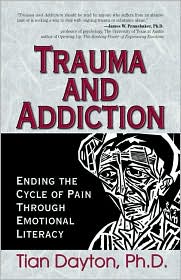
For the past decade, author Tian Dayton has been researching trauma and addiction, and how psychodrama (or sociometry group psychotherapy) can be used in their treatment. Since trauma responses are stored in the body, a method of therapy that engages the body through role play can be more effective in accessing the full complement of trauma-related memories.
This latest book identifies the interconnection of trauma and addictive behavior, and shows why they can become an unending cycle. Emotional and psychological pain so often lead to self-medicating, which leads to more pain, and inevitably more self-medicating, and so on--ad infinitum. This groundbreaking book offers readers effective ways to work through their traumas in order to heal their addictions and their predilection toward what clinicians call self-medicating (the abuse of substances [alcohol, drugs, food], activities [work, sex, gambling, etc.] and/or possessions [money, material things].) Readers caught up in the endless cycle of trauma and addiction will permanently transform their lives by reading this book.
Therapists treating patients for whom no other avenue of therapy has proved effective will find that this book offers practical, lasting solutions. Case studies and examples of this behavioral phenomenon will illustrate the connection, helping readers understand its dynamics, recognize their own situations and realize that they are not alone in experiencing this syndrome. The author deftly combines the longstanding trauma theories of Van der Kolk, Herman, Bowlby, Krystal and others with her own experiential methods using psychodrama, sociometry and group therapy in the treatment of addiction and posttraumatic stress disorder. While designed to be useful to therapists, this book will also be accessible to trade readers. It includes comprehensive references, as well as a complete index.

Developed by two master clinicians with extensive experience in cognitive therapy treatment and training, this popular workbook shows readers how to improve their lives using cognitive therapy. The book is designed to be used alone or in conjunction with professional treatment. Step-by-step worksheets teach specific skills that have helped hundreds of thousands people conquer depression, panic attacks, anxiety, anger, guilt, shame, low self-esteem, eating disorders, substance abuse and relationship problems. Readers learn to use mood questionnaires to identify, rate, and track changes in feelings; change the thoughts that contribute to problems; follow step-by-step strategies to improve moods; and take action to improve daily living and relationships. The book's large-size format facilitates reading and writing ease.

